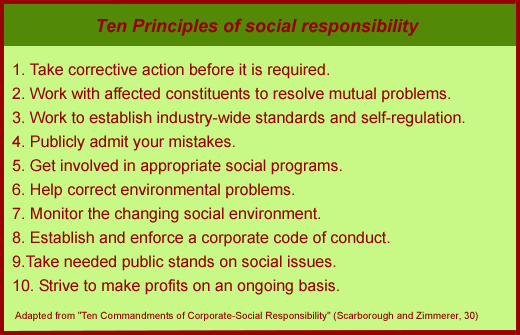Fair Labor Practices
A movement to ensure fair labor practices gained strength in the 1990’s as assembly production in apparel, toys, electronics, and other industries requiring low-skilled labor moved off shore. Unfortunately, the labor practices that had been banned through regulations and laws in the United States since the early 1900’s were still present in some of these countries. Restrictions against child labor, minimum wages, and philosophies of fair wages for equal work were not always accepted practices. The media discovered and publicized the noncompliance of production factories (in other words, sweatshops) where U.S. manufacturers and retailers contracted for labor.

The main issue became compliance with fair labor practices. A White House special panel, the Apparel Industry Partnership, was appointed in the mid 1990’s and developed a plan for independent monitoring labor practices. The Partnership eventually resulted in the formation of a non-profit organization, The Fair Labor Association ( FLA, see www.fla.org), in 1997.
Several other organizations with similar missions emerged.
- The Workers’ Rights Consortium (WRC, see www.workersrights.org) had an emphasis on input from the workers.
- WRAP was the American Apparel and Footwear Association’s initiative named World Responsible Apparel Production (WRAP, see www.aafa.org) organization.
- Social Accountability International (SAI, see www.sa-intl.org) developed a standard and approach similar to the internationally accepted quality management approach, ISO 9000.
In addition to compliance in fair labor practices, fair trade organizations promote expansion of income generation opportunities, sustainable businesses, and empowerment of workers as indicated in the chart below.
Compliance programs differ by
- specific categories of compliance
- board membership
- implementation of compliance programs
- types of monitoring systems.
The emphasis for compliance has been on factories outside of the U.S. This is where the greatest growth in apparel production activities is occurring and the domestic laws do not always assure fair labor practices.
But we must remember that there are still problems with fair labor practices in the U.S.
You can be part of the fair labor compliance solutions by
- researching the goals and practices of the compliance organizations
- structuring your business to be in compliance
- doing business with contractors that are in compliance with fair labor practices
- promoting compliance with fair labor and other socially responsible practices in the industry.
 |

 "[Employees] were given a forum to voice their concerns…and as the suppliers learn more about the standard, are comfortable with it, and really use it to its fullest. Then, they will see the benefits as well." "[Employees] were given a forum to voice their concerns…and as the suppliers learn more about the standard, are comfortable with it, and really use it to its fullest. Then, they will see the benefits as well."
Amy Hall describes how Eileen Fisher uses the Social Accountability International standard, SA 8000, to help the company assure fair labor practices and human rights at the factories producing their apparel products.
|
Respecting human rights
Basic human rights include
- the right to health and safety
- the right to work without discrimination based on gender, race, religion or other factors.
You can demonstrate respect for these human rights through
- written and informal policies
- institutionalized and personal tolerance
- everyday behaviors.
Health and safety issues are usually clear-cut as they are often based on laws or regulations instituted by external bodies.

As the business owner/entrepreneur, it is important to work with all employees to establish a company culture and policies that promote human rights. Ownership of policies by the employees is one of the most significant factors in the ultimate effectiveness of a business’s human rights strategy. Policies should include issues on sexual harassment and discrimination, smoking, and drugs as well as issues that employees identify as important and request clear policies on.
Consider employee benefits in addition to wages, insurance, and vacation time. Employees who are empowered to learn new things and advance in responsibility will be happier, loyal, and more productive. Develop individual plans for each employee that embraces identity and encourages career advancement and develop in-house programs to facilitate both.
Create an atmosphere where
- learning is the norm
- production workers learn from and teach managers and vice versa
- advancement of employees within and to other companies is celebrated
And you will create a socially responsible business.
|




